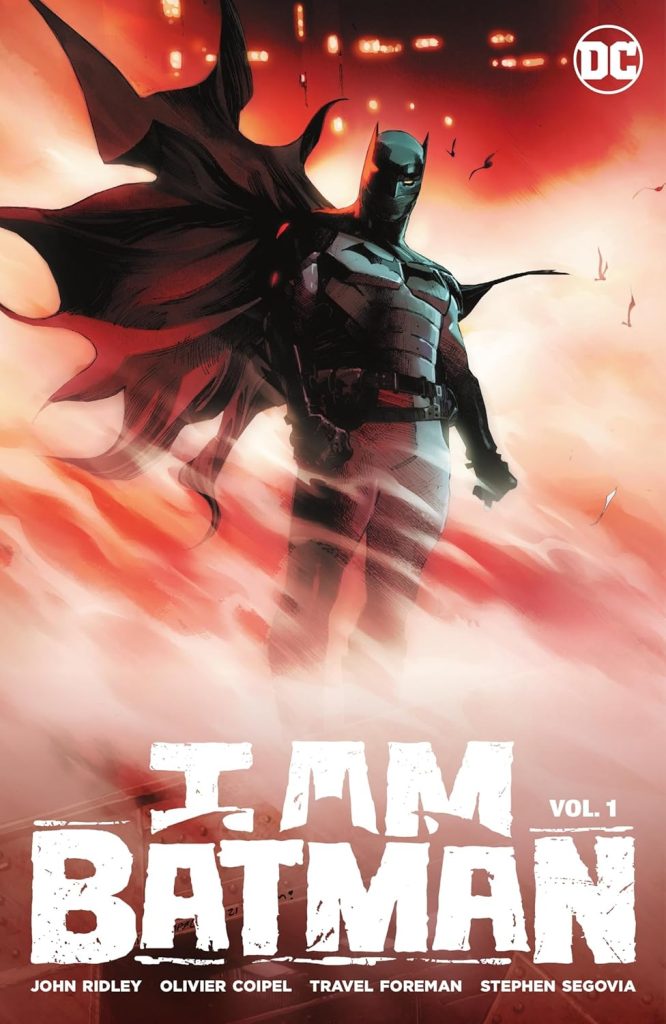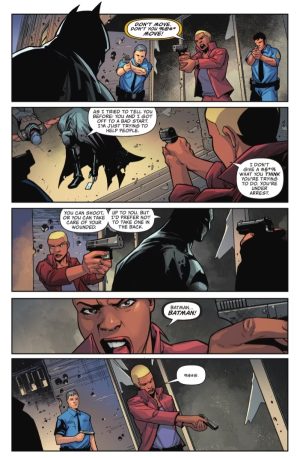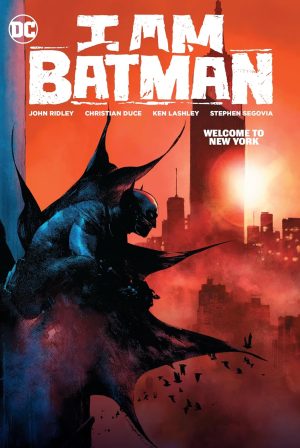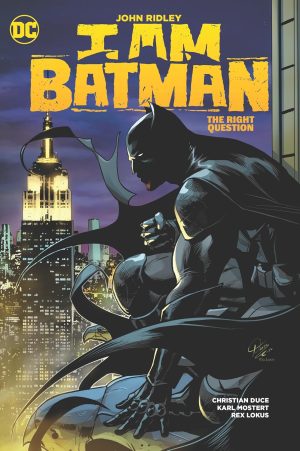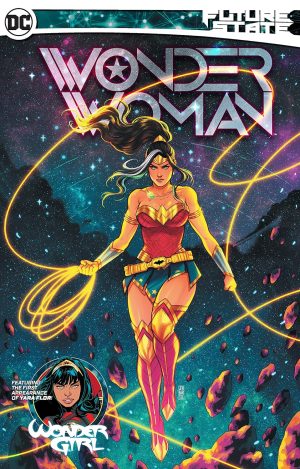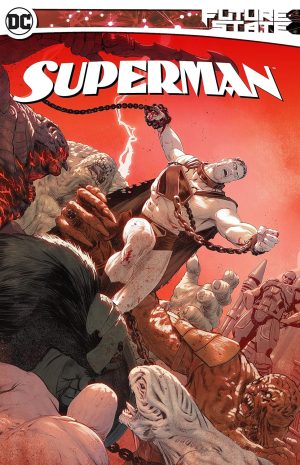Review by Karl Verhoven
It’s been a gradual process introducing Jace Fox as the Batman of the very near future, although John Ridley has been in charge from the start. First seen fully into the job in Future State, in Second Son Ridley pulled back a little to spotlight the Fox family disagreements, with Jace responsible for a fair few, and only returning to Gotham and his family after several years distancing himself. It also showed Jace discovering Batman’s equipment in a basement of the family’s business HQ.
This opening volume of I Am Batman is Ridley establishing what differentiates Jace from Bruce Wayne, besides the obvious skin colour, hidden for most of the time by a gas-filtering mask. Part of the difference is the times. This is Gotham under the control of an armoured private police force employed by the Mayor, and where a shadowy online presence calling themselves the Seer, can motivate the downtrodden masses. Jace rapidly decides to dispense with much of Batman’s equipment, and trusts an unseen ally to scour online in preference to surveillance. He also feels it’s important to be seen protecting people instead of being a shadowy rescuer who disappears back into the darkness.
It all adds up to a likeable character striving for redemption and wanting to do right by Gotham. “Represent. Always represent”, is the advice he’s given right at the end, yet it’s a course Jace has already taken.
Multiple artists is generally not a good sign, and surprising here on what ought to be a prestige project, but there’s no great clash of styles. Christian Duce will be the artist of choice from Vol. 2 onward, but he only starts contributing toward the end, always co-credited with Stephen Segovia (sample art). Together, though, they establish the grim lives for Gotham’s underclass under the current policing methods. Travel Foreman and Olivier Coipel have more contrasting styles, with Foreman edging toward cartooning on the opening chapter, while Coipel’s style on the second chapter is a tighter version of what plays out in the remainder, redefining the cast going forward.
If Jace/Batman isn’t in the spotlight Ridley concentrates either on members of the Fox family or angry police detective Chubb. He ensures everything moves forward rapidly, with no hanging around for introspection, but that’s also problematical, as there’s a definite sense of not getting the whole story. Threats are built up, and then with little explanation they’re no longer threats, and the once-powerful are now in danger of death themselves. The character who was Jace’s first target in Second Son is here discarded after barely being seen, and there’s little explanation as to how the Magistrate is suddenly discredited. Research reveals much of the hands on work occurs in Fear State, but without references here Ridley’s work reads as incomplete, as if pages are missing. And it Jace is Batman during Fear State, isn’t he in the present not the future? It’s question never addressed here or in Welcome to New York.
Much of this volume is set-up and ends with Jace deciding he can do more good based in New York, which is where the action shifts next time.
